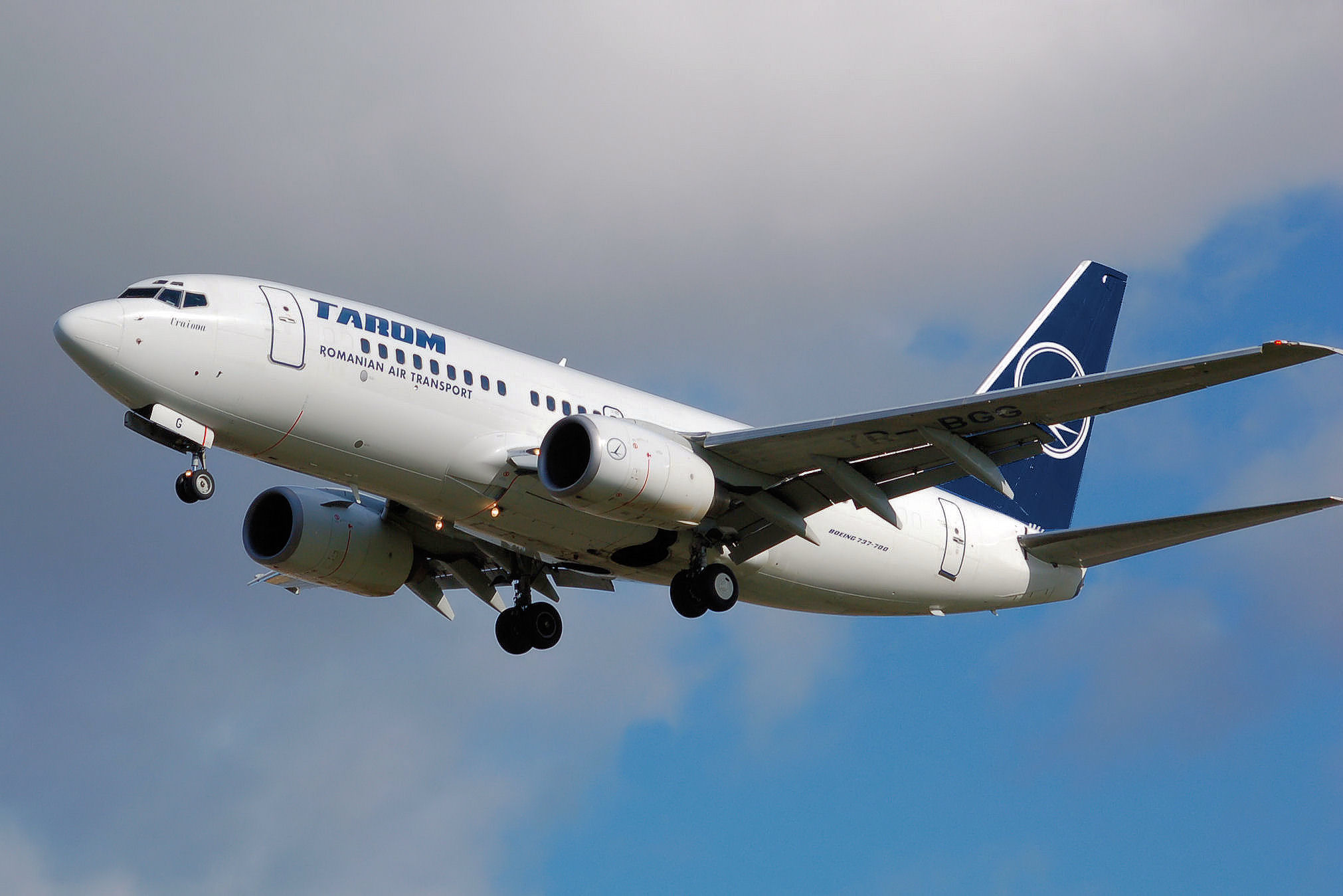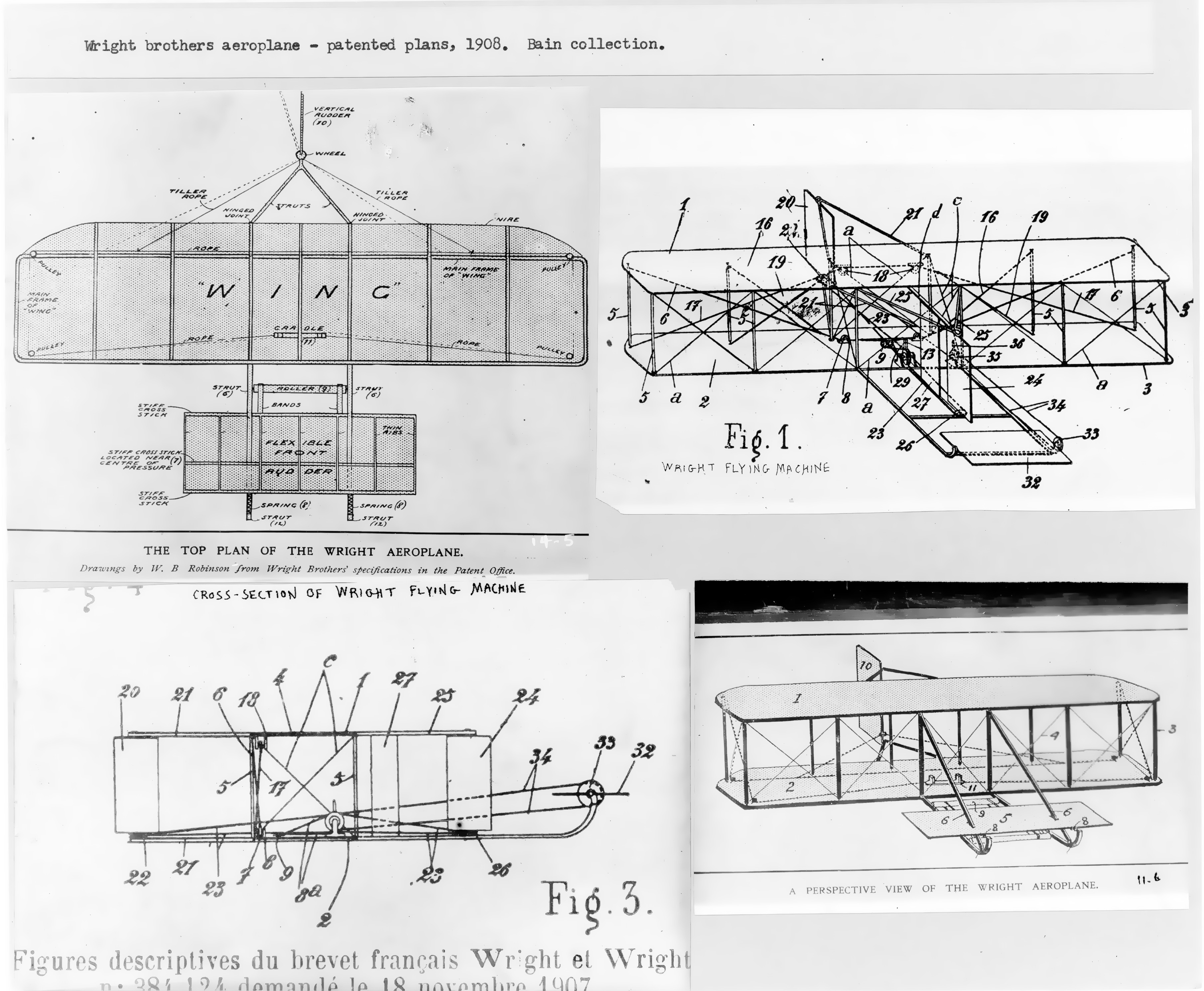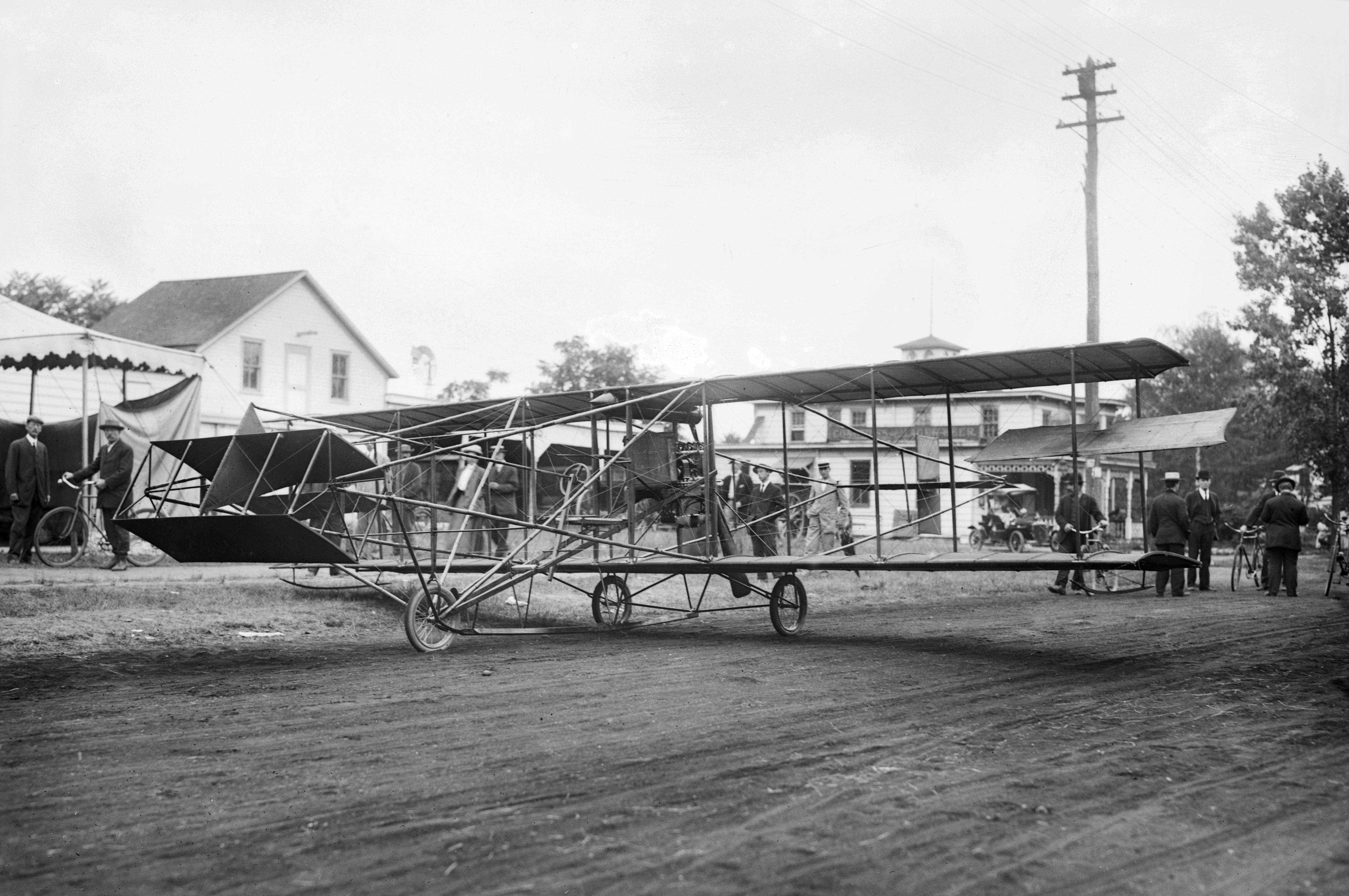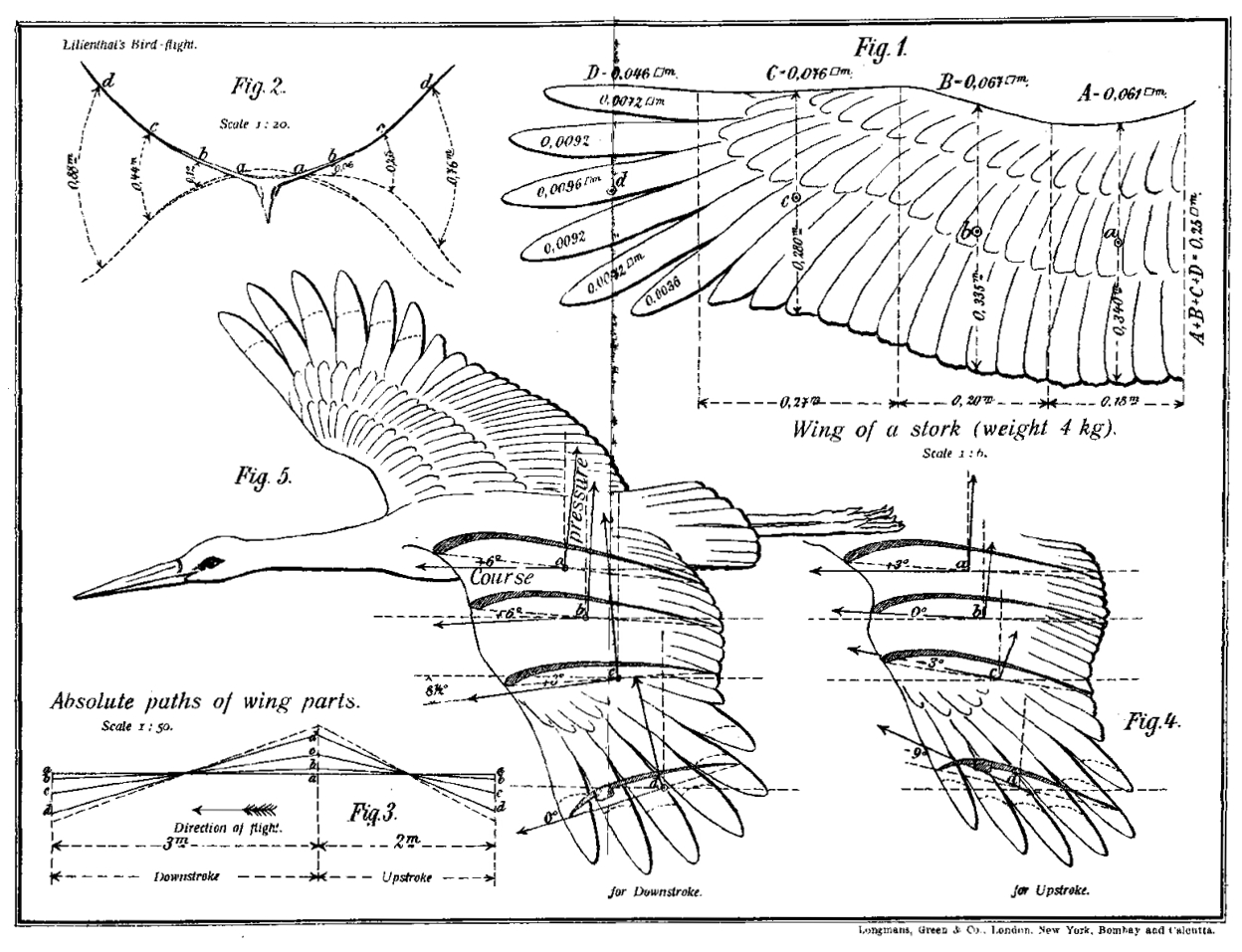|
Foreplane
In aeronautics, a canard is a wing configuration in which a small forewing or foreplane is placed forward of the main wing of a fixed-wing aircraft or a weapon. The term "canard" may be used to describe the aircraft itself, the wing configuration, or the foreplane.Clancy, L. J. (1975). ''Aerodynamics'', Pitman (UK), Halsted (US), 1975. Pages 292-3.. Canard wings are also extensively used in guided missiles and smart bombs. The term "canard" arose from the appearance of the Santos-Dumont 14-bis of 1906, which was said to be reminiscent of a duck (''canard'' in French) with its neck stretched out in flight. Despite the use of a canard surface on the first powered aeroplane, the Wright Flyer of 1903, canard designs were not built in quantity until the appearance of the Saab Viggen jet fighter in 1967. The aerodynamics of the canard configuration are complex and require careful analysis. Rather than use the conventional tailplane configuration found on most aircraft, an aircraft ... [...More Info...] [...Related Items...] OR: [Wikipedia] [Google] [Baidu] |
Three Surface Aircraft
A three-surface aircraft or sometimes three-lifting-surface aircraft has a foreplane, a central wing and a tailplane. The central wing surface always provides lift and is usually the largest, while the functions of the fore and aft planes may vary between types and may include lift, control and/or stability. In civil aircraft the three surface configuration may be used to give safe stalling characteristics and short takeoff and landing (STOL) performance. It is also claimed to allow minimizing the total wing surface area, reducing the accompanying skin drag. In combat aircraft this configuration may also be used to enhance maneuverability both before and beyond the stall, often in conjunction with vectored thrust. History An early designation used in 1911 was "three plane system". The Fernic designs of the 1920s were referred to as "tandem". While there are indeed two lifting wing surfaces in tandem, the tailplane forms a third horizontal surface. Pioneer experiments Durin ... [...More Info...] [...Related Items...] OR: [Wikipedia] [Google] [Baidu] |
Wing Configuration
The wing configuration or planform of a fixed-wing aircraft (including both glider (aircraft), gliders and powered aeroplanes) is its arrangement of lifting and related surfaces. Aircraft designs are often classified by their wing configuration. For example, the Supermarine Spitfire is a conventional low wing cantilever monoplane of straight elliptical planform with moderate aspect ratio and slight dihedral. Many variations have been tried. Sometimes the distinction between them is blurred, for example the wings of many modern combat aircraft may be described either as cropped compound deltas with (forwards or backwards) swept trailing edge, or as sharply tapered swept wings with large leading edge root extensions (or LERX). Some are therefore duplicated here under more than one heading. This is particularly so for variable geometry and combined (closed) wing types. Most of the configurations described here have flown (if only very briefly) on full-size aircraft. A few theoret ... [...More Info...] [...Related Items...] OR: [Wikipedia] [Google] [Baidu] |
Fixed-wing Aircraft
A fixed-wing aircraft is a heavier-than-air aircraft, such as an airplane, which is capable of flight using aerodynamic lift. Fixed-wing aircraft are distinct from rotary-wing aircraft (in which a rotor mounted on a spinning shaft generates lift), and ornithopters (in which the wings oscillate to generate lift). The wings of a fixed-wing aircraft are not necessarily rigid; kites, hang gliders, variable-sweep wing aircraft, and airplanes that use wing morphing are all classified as fixed wing. Gliding fixed-wing aircraft, including free-flying gliders and tethered kites, can use moving air to gain altitude. Powered fixed-wing aircraft (airplanes) that gain forward thrust from an engine include powered paragliders, powered hang gliders and ground effect vehicles. Most fixed-wing aircraft are operated by a pilot, but some are unmanned or controlled remotely or are completely autonomous (no remote pilot). History Kites Kites were used approximately 2,800 years ago ... [...More Info...] [...Related Items...] OR: [Wikipedia] [Google] [Baidu] |
Wright Flyer
The ''Wright Flyer'' (also known as the ''Kitty Hawk'', ''Flyer'' I or the 1903 ''Flyer'') made the first sustained flight by a manned heavier-than-air powered and controlled aircraft on December 17, 1903. Invented and flown by brothers Wright brothers, Orville and Wilbur Wright, it marked the beginning of the Aviation in the pioneer era, pioneer era of aviation. The aircraft is a single-place biplane design with Dihedral (aeronautics)#Anhedral and polyhedral, anhedral (drooping) wings, front double Elevator (aeronautics), elevator (a canard (aeronautics), canard) and rear double rudder. It used a gasoline engine powering two pusher propellers. Employing "wing warping", it was relatively unstable and very difficult to fly. The Wright brothers flew it four times in a location now part of the town of Kill Devil Hills, North Carolina, Kill Devil Hills, about south of Kitty Hawk, North Carolina. The airplane flew on its fourth and final flight, but was damaged on landing, and ... [...More Info...] [...Related Items...] OR: [Wikipedia] [Google] [Baidu] |
Fabre Hydravion
Fabre Hydravion is the name used in English-language sources for an originally unnamed experimental floatplane designed by Henri Fabre. The aircraft is notable as the first to take off from water under its own power. Development Hydravion (French for seaplane/floatplane) was developed over a period of four years by Fabre, assisted by a former mechanic of Captain Ferdinand Ferber, named Marius Burdin, and Léon Sebille, a naval architect from Marseille. Fabre did not initially name his machine, which in contemporary reports was referred to as an "aéroplane marin", but it subsequently came to be referred to in English common usage by the French term for the type of craft. The aircraft was a canard configuration monoplane whose structure made extensive use of a beam design working as a spanwise spar on its wing panels and forward canard surface, patented by Fabre. This was a Warren truss girder with all members having a streamlined section. Two of these beams, one above ... [...More Info...] [...Related Items...] OR: [Wikipedia] [Google] [Baidu] |
Saab Viggen
The Saab 37 Viggen (''The Tufted Duck'', ambiguous with ''The Thunderbolt'') is a single-seat, single-engine multirole combat aircraft designed and produced by the Swedish aircraft manufacturer Saab. It was the first canard-equipped aircraft to be produced in quantityFredriksen 2001, p. 279. and the first to carry an airborne digital central computer with integrated circuits for its avionics, arguably making it the most modern/advanced combat aircraft in Europe at the time of introduction. The digital central computer was the first of its kind in the world, automating and taking over tasks previously requiring a navigator/copilot, facilitating handling in tactical situations where, among other things, high speeds and short decision times determined whether attacks would be successful or not, a system not surpassed until the introduction of the Panavia Tornado into operational service in 1981. Development work begun during the early 1950s to develop a successor to the Saab 3 ... [...More Info...] [...Related Items...] OR: [Wikipedia] [Google] [Baidu] |
Saab AJS-37 Viggen 37098 52 (SE-DXN) (9256079273)
Saab or SAAB may refer to: Brands and enterprises * Saab AB, a Swedish aircraft, aerospace and defence company, still known as SAAB, and together with subsidiaries as Saab Group ** Datasaab, a former computer company, started as spin off from Saab AB * Saab Automobile, a former Swedish automobile manufacturer, formerly a division of Saab AB ** SaabO, a caravan (camper/travel trailer) produced by Saab Automobile from 1964 to 1968 * Saab-Scania, the former corporate group formed by Saab AB and Scania-Vabis People with the surname * Alejandro Saab (born 1994), American voice actor * Alex Saab (born 1971), Colombian businessman charged with money laundering * Elie Saab (born 1964), Lebanese fashion designer * Hassan Saab (1922–1990), Lebanese diplomat and political scientist * Jocelyne Saab (1948–2019), Lebanese filmmaker * Karim Saab (born 2001), Venezuelan footballer * Tarek William Saab (born 1963), Venezuelan politician * Tarek Saab (businessman), candidate on ''The Apprentice' ... [...More Info...] [...Related Items...] OR: [Wikipedia] [Google] [Baidu] |
Universal Joint
A universal joint (also called a universal coupling or U-joint) is a joint or coupling connecting rigid shafts whose axes are inclined to each other. It is commonly used in shafts that transmit rotary motion. It consists of a pair of hinges located close together, oriented at 90° to each other, connected by a cross shaft. The universal joint is not a constant-velocity joint. U-joints are also sometimes called by various eponymous names, as follows: * Cardan joint, after Gerolamo Cardano, a polymath of the 16th century who contributed to knowledge of various clever mechanisms, including gimbals * Hooke joint or Hooke's joint, after Robert Hooke, a polymath of the 17th century who contributed to knowledge of various clever mechanisms * Spicer joint, after Clarence W. Spicer and the Spicer Manufacturing Company, who manufactured U joints * Hardy Spicer joint, after the Hardy Spicer brand, a successor to the Spicer brand History The main concept of the universal joi ... [...More Info...] [...Related Items...] OR: [Wikipedia] [Google] [Baidu] |
Louis Blériot
Louis Charles Joseph Blériot ( , also , ; 1 July 1872 – 1 August 1936) was a French aviator, inventor, and engineer. He developed the first practical headlamp for cars and established a profitable business manufacturing them, using much of the money he made to finance his attempts to build a successful aircraft. Blériot was the first to use the combination of hand-operated joystick and foot-operated rudder control as used to the present day to operate the aircraft flight control system, aircraft control surfaces. Blériot was also the first to make a working, powered, piloted monoplane.Gibbs-Smith 1953, p. 239 In 1909 he became world-famous for making the first aeroplane flight across the English Channel, winning the prize of £1,000 offered by the ''Daily Mail'' newspaper. He was the founder of Blériot Aéronautique, a successful aircraft manufacturing company. Early years Born at No.17h rue de l'Arbre à Poires (now rue Sadi-Carnot) in Cambrai, Louis was the first of five ... [...More Info...] [...Related Items...] OR: [Wikipedia] [Google] [Baidu] |
Curtiss XP-55 Ascender In Flight 061024-F-1234P-007
The Curtiss Aeroplane and Motor Company (1909–1929) was an American aircraft manufacturer originally founded by Glenn Hammond Curtiss and Augustus Moore Herring in Hammondsport, New York. After significant commercial success in its first decades, it merged with the Wright Aeronautical to form Curtiss-Wright Corporation. History Origin In 1907, Glenn Curtiss was recruited by the scientist Dr. Alexander Graham Bell as a founding member of Bell's Aerial Experiment Association (AEA), with the intent of establishing an aeronautical research and development organization. According to Bell, it was a "co-operative scientific association, not for gain but for the love of the art and doing what we can to help one another."Milberry 1979, p 13. In 1909, shortly before the AEA was disbanded, Curtiss partnered with Augustus Moore Herring to form the Herring-Curtiss Company.Gunston 1993, p. 87. It was renamed the Curtiss Aeroplane Company in 1910 and reorganized in 1912 after being ... [...More Info...] [...Related Items...] OR: [Wikipedia] [Google] [Baidu] |
Otto Lilienthal
Karl Wilhelm Otto Lilienthal (23 May 1848 – 10 August 1896) was a German pioneer of aviation who became known as the "flying man". He was the first person to make well-documented, repeated, successful flights with gliders, therefore making the idea of heavier-than-air aircraft a reality. Newspapers and magazines published photographs of Lilienthal gliding, favourably influencing public and scientific opinion about the possibility of flying machines becoming practical. Lilienthal's work led to his developing the concept of the modern wing. His flight attempts in 1891 are seen as the beginning of human flight and the " Lilienthal Normalsegelapparat" is considered the first airplane in series production, making the ''Maschinenfabrik Otto Lilienthal'' in Berlin the first airplane production company in the world. He has been referred to as the "father of aviation" and "father of flight". On 9 August 1896, Lilienthal’s glider stalled and he was unable to regain control. Fallin ... [...More Info...] [...Related Items...] OR: [Wikipedia] [Google] [Baidu] |









